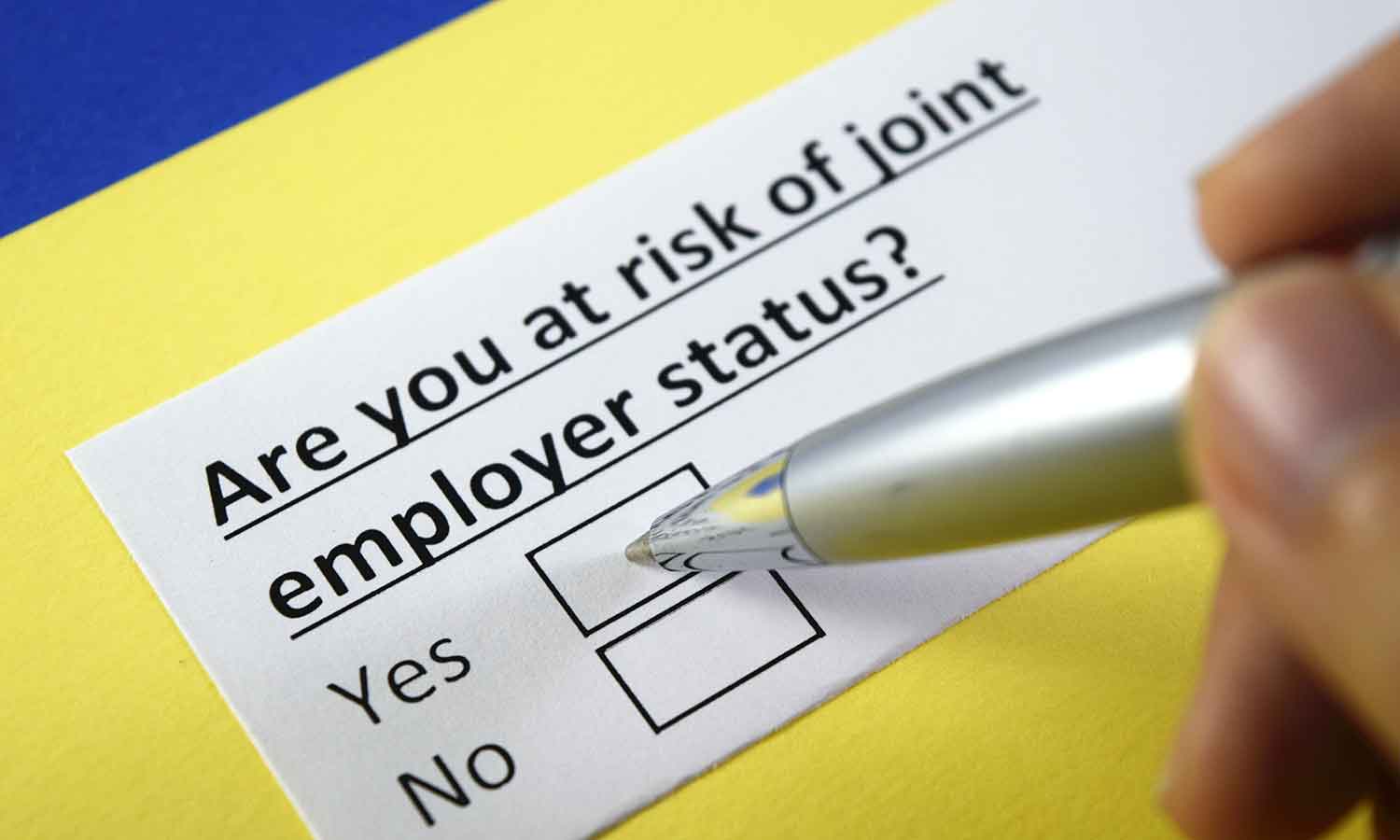
Published October 26, 2023
NLRB Widens its Joint Employer Net
In a final rule to be published on Friday, the National Labor Relations Board has reconstructed the joint employment test. This reconstructed test, set to go into effect 60 days following publication, will have the effect of increasing the instances in which multiple entities will be deemed joint employers of a particular group of employees.
Under the new rule, two or more entities will be considered joint employers if they share or co-determine one or more of the employee’s essential terms and conditions of employment. Although the rule identifies a finite, exclusive set of “essential terms and conditions,” an entity need only share or co-determine a single term or condition to be considered a joint employer. What is more, the entity will be implicated as a joint employer not only for the actual exercise of authority over one or more conditions of employment, but also for indirect and even unexercised authority. In contrast, the soon-to-be-replaced 2020 rule required direct and immediate control over essential terms and conditions of employment before allowing a joint employment finding.
The Board promises to undertake an individual analysis and return to a common law approach to the joint employment relationship. Its reliance on indirect or reserved authority or control, however, makes it likely that a joint employment relationship will increasingly be found. As such, more companies found to be joint employers could be pulled in and required to negotiate with a unionized workforce and face liability for unfair labor practices.
For more information on the new rule and its potential effect within the transportation industry, please contact Scopelitis Partners Greg Feary, Jim Hanson, Jack Finklea, David Robinson, or Don Vogel.
Related Topics
News from Scopelitis is intended as a report to our clients and friends on developments affecting the transportation industry. The published material does not constitute an exhaustive legal study and should not be regarded or relied upon as individual legal advice or opinion.

Published October 26, 2023
NLRB Widens its Joint Employer Net
In a final rule to be published on Friday, the National Labor Relations Board has reconstructed the joint employment test. This reconstructed test, set to go into effect 60 days following publication, will have the effect of increasing the instances in which multiple entities will be deemed joint employers of a particular group of employees.
Under the new rule, two or more entities will be considered joint employers if they share or co-determine one or more of the employee’s essential terms and conditions of employment. Although the rule identifies a finite, exclusive set of “essential terms and conditions,” an entity need only share or co-determine a single term or condition to be considered a joint employer. What is more, the entity will be implicated as a joint employer not only for the actual exercise of authority over one or more conditions of employment, but also for indirect and even unexercised authority. In contrast, the soon-to-be-replaced 2020 rule required direct and immediate control over essential terms and conditions of employment before allowing a joint employment finding.
The Board promises to undertake an individual analysis and return to a common law approach to the joint employment relationship. Its reliance on indirect or reserved authority or control, however, makes it likely that a joint employment relationship will increasingly be found. As such, more companies found to be joint employers could be pulled in and required to negotiate with a unionized workforce and face liability for unfair labor practices.
For more information on the new rule and its potential effect within the transportation industry, please contact Scopelitis Partners Greg Feary, Jim Hanson, Jack Finklea, David Robinson, or Don Vogel.
News from Scopelitis is intended as a report to our clients and friends on developments affecting the transportation industry. The published material does not constitute an exhaustive legal study and should not be regarded or relied upon as individual legal advice or opinion.




